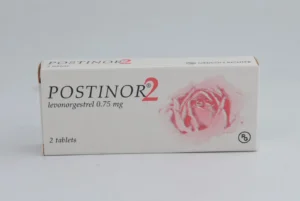Can postinor 2 work during ovulation: Postinor 2 works through three main mechanisms:
- Prevention of Ovulation: Levonorgestrel can inhibit or delay the release of an egg from the ovary if taken before ovulation.
- Interference with Fertilization: It alters the cervical mucus, making it more difficult for sperm to travel and reach the egg.
- Disruption of Implantation: If fertilization has occurred, it may change the endometrial lining, making it less receptive to a fertilized egg.
Can postinor 2 work during ovulation

Effectiveness During Ovulation
The efficacy of Postinor 2 is highest when taken before ovulation, as its primary mechanism is to prevent the release of an egg. However, during ovulation, the window for preventing pregnancy narrows significantly, and its effectiveness decreases. Here’s why:
- Ovulation Has Already Occurred: If ovulation has already taken place, the primary mechanism of preventing egg release is no longer applicable. Sperm may already be present in the reproductive tract, capable of fertilizing the released egg.
- Limited Impact on Fertilization: While Postinor 2 can make cervical mucus hostile to sperm, this mechanism may not be sufficient if sperm have already reached the egg.
- Minimal Effect on Implantation: There is limited evidence to suggest that Postinor 2 is effective in disrupting implantation if fertilization has already occurred. This makes it less reliable as an emergency contraceptive during ovulation.
Timing and Efficacy
The timing of administration is critical to the effectiveness of Postinor 2:
- Before Ovulation: Highly effective due to its ability to delay or inhibit egg release.
- During Ovulation: Reduced efficacy because the egg has already been released, and sperm may already be present.
- After Ovulation: Least effective as it cannot reverse fertilization or implantation.
Clinical Evidence
Studies have shown that the effectiveness of levonorgestrel-based emergency contraception is significantly lower during the ovulatory phase. Some data suggest that its overall efficacy is around 52-85%, but this figure varies depending on the timing of use. If taken within 24 hours of unprotected sex, it is most effective, but its reliability diminishes as time progresses, especially during and after ovulation.
Alternative Options
For individuals who have unprotected sex during ovulation, other emergency contraceptive methods may be more effective:
- Copper Intrauterine Device (IUD): A highly effective emergency contraceptive that works by creating a toxic environment for sperm and eggs, preventing fertilization and implantation. It can be used up to five days after unprotected intercourse.
- Ulipristal Acetate (Ella): Another emergency contraceptive pill that is more effective than levonorgestrel during the peri-ovulatory and post-ovulatory phases.
Conclusion
Postinor 2 can be effective as an emergency contraceptive, but its efficacy is significantly reduced during ovulation. If you suspect you are ovulating, consult a healthcare provider for advice on alternative emergency contraception methods, such as a copper IUD or ulipristal acetate. Understanding your menstrual cycle and acting quickly after unprotected intercourse are crucial to maximizing the effectiveness of emergency contraception.